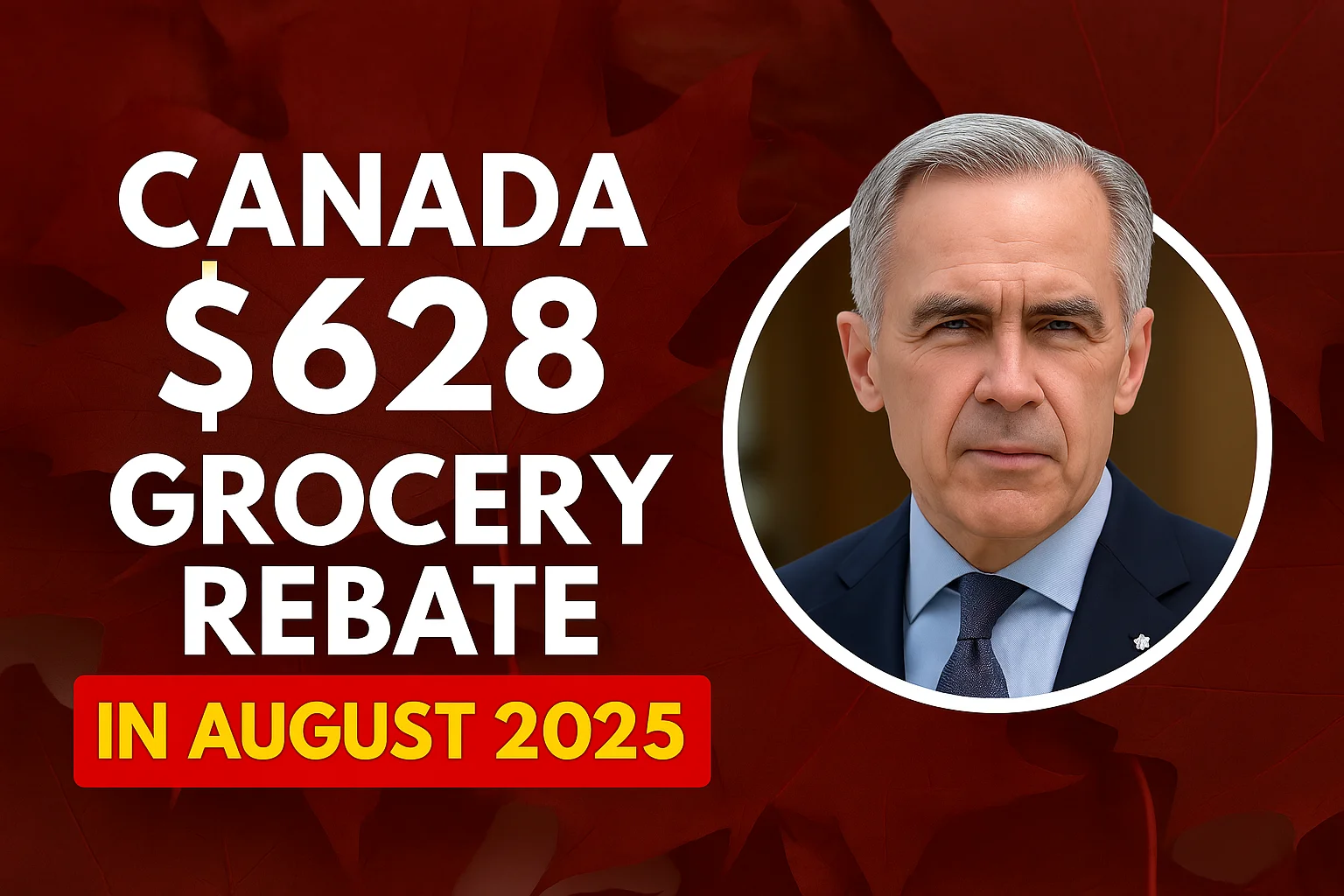In August 2025, millions of eligible Canadians are set to receive a one-time $628 rebate through the federal government’s Climate Action Incentive Payment (CAIP). Administered by the Canada Revenue Agency (CRA), this rebate helps offset the cost of carbon pricing, with automatic payments issued to qualifying individuals and families.
If you’re wondering whether you’re eligible or when you’ll get the payment, here’s a full breakdown of the rebate, CRA guidelines, and how the amount is calculated.
Table of Contents
- What Is the $628 Rebate?
- Eligibility Requirements
- Payment Dates and CRA Disbursement Details
- Province-Wise Breakdown
- How to Check If You Qualify
- FAQs
- Final Thoughts
What Is the $628 Rebate from the CRA?
The $628 rebate is part of the Climate Action Incentive Payment (CAIP), which offers quarterly tax-free payments to help Canadians handle rising living expenses tied to federal carbon pricing. The August 2025 payment is one of four instalments issued each year and may be higher depending on family size and location.
The rebate is non-taxable, automatically paid to those who qualify through their personal tax return—no separate application is needed.
Who Qualifies for the $628 CAIP Rebate?
To be eligible for the August 2025 CAIP payment, you must:
- Be a resident of Canada on the first day of the payment month
- Have filed your 2024 income tax return
- Be 19 years of age or older, or
- Have (or had) a spouse or common-law partner, or
- Be a parent who lives with your child
Additional eligibility may apply based on your province of residence, as the rebate amount differs across jurisdictions.
When Will the $628 Payment Be Made?
The next CAIP instalment of up to $628 is scheduled for August 15, 2025. Payments are typically deposited directly into the same bank account used for your tax refunds or other government benefits.
Future 2025 CAIP payment schedule:
| Payment Month | Expected Date |
|---|---|
| January 2025 | January 15 |
| April 2025 | April 15 |
| August 2025 | August 15 |
| October 2025 | October 15 |
If you’ve signed up for direct deposit with CRA, the payment will appear in your account automatically. Paper checks may take a few extra days to arrive.
How Much You’ll Receive: Province-Wise Breakdown
The total amount depends on your province of residence and household size. Here’s an approximate breakdown for a single adult with no children:
| Province | Single Adult Amount (Aug 2025) |
|---|---|
| Ontario | $140 |
| Alberta | $193 |
| Manitoba | $132 |
| Saskatchewan | $170 |
| Rural Supplement | Extra 10% if eligible |
| Family Add-On | More for spouses & dependents |
The $628 total typically reflects the combined amount for a family of four in Alberta (the highest-paying province). Families in other provinces will receive adjusted amounts.
How to Check If You Qualify
To verify your eligibility:
- Log in to your CRA My Account
- Check your 2024 tax return filing status
- Confirm your direct deposit setup
- Review your benefit payments section for upcoming CAIP disbursements
If you haven’t filed your taxes, you must do so—even with zero income—to receive any government rebates.
Frequently Asked Questions
1. Do I need to apply for the rebate?
No application is required. The CRA automatically calculates and distributes CAIP payments to eligible individuals based on their tax returns.
2. What if I recently moved provinces?
Your payment will reflect the province where you resided as of July 1, 2025.
3. Is the $628 taxable income?
No. The CAIP rebate is completely tax-free.
4. Can I receive CAIP if I didn’t earn any income?
Yes. As long as you file a tax return, you can still qualify—regardless of income level.
Final Thoughts
The August 2025 CAIP rebate of up to $628 provides critical financial relief to Canadians amid ongoing cost-of-living pressures. With automatic CRA disbursements and no application required, it’s essential that you:
- File your 2024 tax return on time
- Update your banking info with CRA
- Check your CRA My Account for payout details
This rebate, combined with other federal and provincial supports, helps ensure families and individuals aren’t left behind in Canada’s climate transition efforts.

